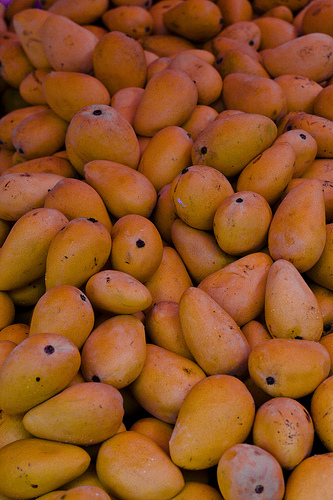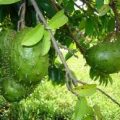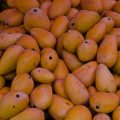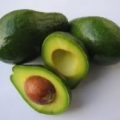Mango Processing Industry an Overview
Mangoes are a sought-after fruit because of its palatability and nutritive value. This tropical fruit is abundant and cheap during the warm summer months but in off-peak seasons, it is a scarce commodity.

However, mangoes can still be enjoyed throughout the year through processing. Among the most popular processed
mango products are dried, puree, juice, jam, juice concentrates, chutney, among others.
Importance of Mango Processing
Small scale mango growers can further increase their income from mango production if they know how to make their products more distinct and marketable.
• Processing of mangoes at the different maturity stages make the fruit’s nutritive value available during off-peak seasons.
• Provides additional income to mango growers due to increased market value of processed mango
products.
• Perishable fresh mangoes including rejects (deformed, cracked and mechanically damaged fruits) can be converted into forms that can be consumed for a longer time or transported to nearby markets, all-year round.
Various mango processing technologies are available for small-scale farmers and mango growers who experience
difficulties in handling and managing their production. Typhoon, fruit droppings and early ripening of fruits are
just some of the factors that decrease the market value of fresh mangoes in the market.
Type of Mango Processing
Mangoes are processed depending on the fruit’s maturity:
Green fruit
• Fruit droppings which are the size of a pullet’s egg (45 to 60 days after flower induction) can be made into
pickles (burong mangga).
• Rejects and fruits that were bruised or hit by accidents such as typhoons (except mangoes that are inflicted with fungus and other diseases) can be made into green mango puree, green dried mango, green mango jam, burong mangga, mango chutney and green mango tidbits.
Ripe fruit
• Before harvest, some mangoes ripen earlier than other fruits. Because of the shorter shelf life, the price of these
mangoes in fresh form may depreciate. To increase these fruits’ market value and make them available for a longer time, they can be made into dried mango, mango puree, mango juice, mango jam and mango chutney (for semi-ripe mangoes).
Local Processors
There are several companies engaged in the processing of mango into dried, puree, juice, nectar and frozen for local and export markets. Most of these mango processors are predominantly small and medium scale businesses.
Many of the mango puree processors are located in the National Capital Region and surrounding Luzon provinces such as Bulacan, Pampanga, Laguna and Cavite. Majority of the processors for dehydrated candied and puree mangoes are located in Cebu. (Strategic Action Plan for Mango)
Foreign Market
Among the leading importers of fresh and processed Philippine mangoes are Japan, Hongkong, Singapore, Canada and the United States. Although export earnings from fresh mangoes constitute more than 50 percent of the total exports, the revenue from processed mango products still has a significant contribution to the total earnings from mango export.
In 2005, the Philippines exported a total of P13.3 milliom metric tons of processed mango products, which included
dried, puree, juice concentrates, other juices, steamed and cooked mangoes, etc. Mango puree constitutes more than 50% of the exported processed mango products. This export volume was worth P19.5million in US dollar. (BAS, 2005)
Agricultural Training Institute (ATI) by Kristina Mae R. Ombao (managing editor and desktop publishing artist),
Antonieta J. Arceo (editor), Virginia de la Fuente (subject matter specialist), Roberto T. Masbang and Editha S. Vinuya (editorial consultants) Asterio P. Saliot, MNSA and Alberto B. Maningding, MNSA and Evelyn Aro-Esquejo, Ph.D. (advisers)
References
Bureau of Agricultural Statistics. Report on Mango’s Value and Volume of Exports. 2005. Golez, Hernani G.
Presentation on Mango Processing. DA-BPI, National Mango Research and Development Center. Strategic Action Plan for Mango. Quezon City: Department of Agriculture – National Agriculture and Fisheries Council, Philippine Genetics, Inc.
www.fao.org
Copyright 2006
For more information, please write or call: Agricultural Knowledge Management Division
AGRICULTURAL TRAINING INSTITUTE
ATI Bldg., Elliptical Rd., Diliman, Quezon City
Trunkline: (63-2) 929-8541 to 49
Fax Number: (63-2) 926-4623
Website: www.ati.da.gov.ph







i will accept OJT but where?
Gud evening maam /sir. IJust want to inquire if you will be accepting an OJT?